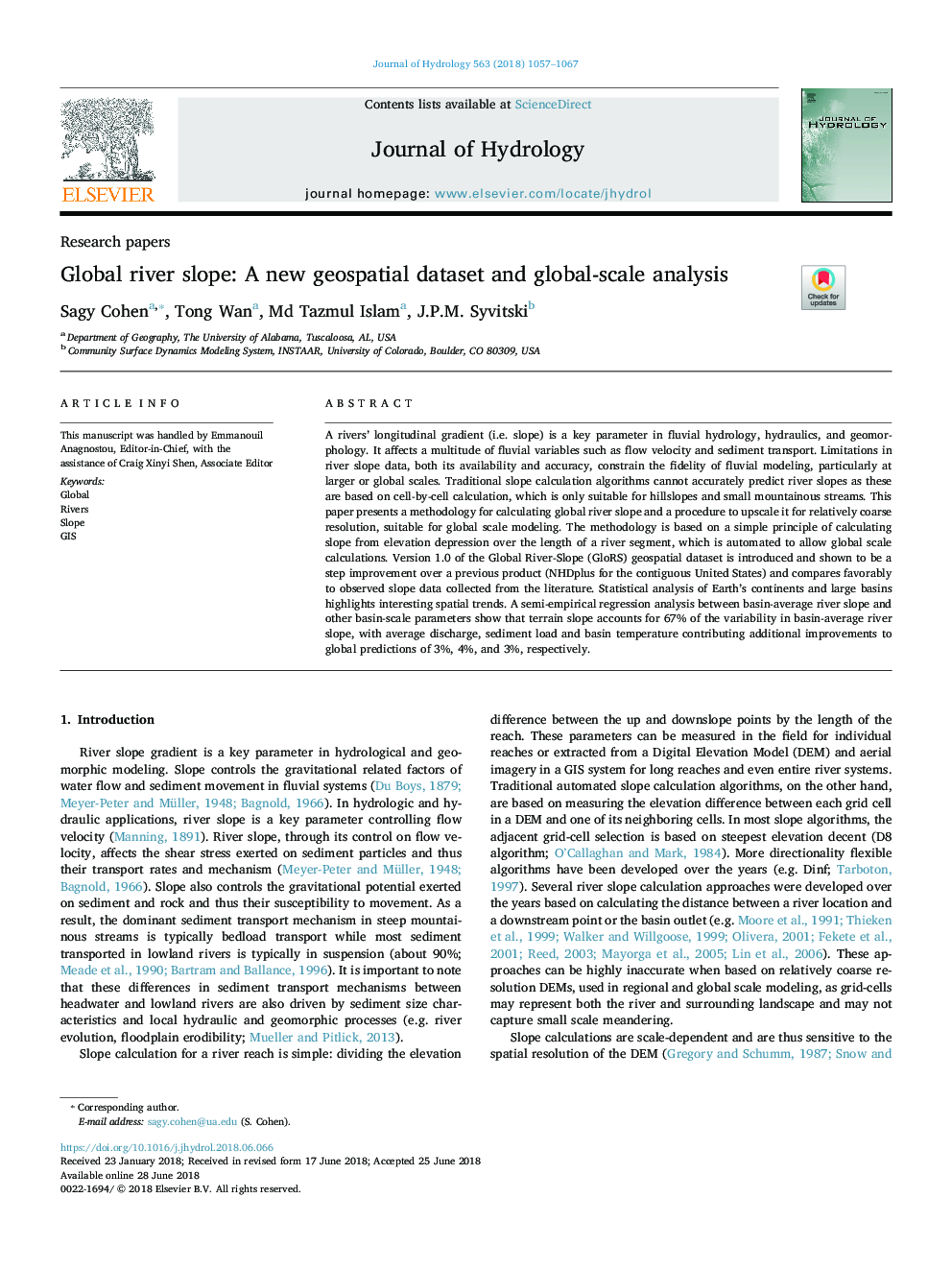| Article ID | Journal | Published Year | Pages | File Type |
|---|---|---|---|---|
| 8894629 | Journal of Hydrology | 2018 | 11 Pages |
Abstract
A rivers' longitudinal gradient (i.e. slope) is a key parameter in fluvial hydrology, hydraulics, and geomorphology. It affects a multitude of fluvial variables such as flow velocity and sediment transport. Limitations in river slope data, both its availability and accuracy, constrain the fidelity of fluvial modeling, particularly at larger or global scales. Traditional slope calculation algorithms cannot accurately predict river slopes as these are based on cell-by-cell calculation, which is only suitable for hillslopes and small mountainous streams. This paper presents a methodology for calculating global river slope and a procedure to upscale it for relatively coarse resolution, suitable for global scale modeling. The methodology is based on a simple principle of calculating slope from elevation depression over the length of a river segment, which is automated to allow global scale calculations. Version 1.0 of the Global River-Slope (GloRS) geospatial dataset is introduced and shown to be a step improvement over a previous product (NHDplus for the contiguous United States) and compares favorably to observed slope data collected from the literature. Statistical analysis of Earth's continents and large basins highlights interesting spatial trends. A semi-empirical regression analysis between basin-average river slope and other basin-scale parameters show that terrain slope accounts for 67% of the variability in basin-average river slope, with average discharge, sediment load and basin temperature contributing additional improvements to global predictions of 3%, 4%, and 3%, respectively.
Related Topics
Physical Sciences and Engineering
Earth and Planetary Sciences
Earth-Surface Processes
Authors
Sagy Cohen, Tong Wan, Md Tazmul Islam, J.P.M. Syvitski,
